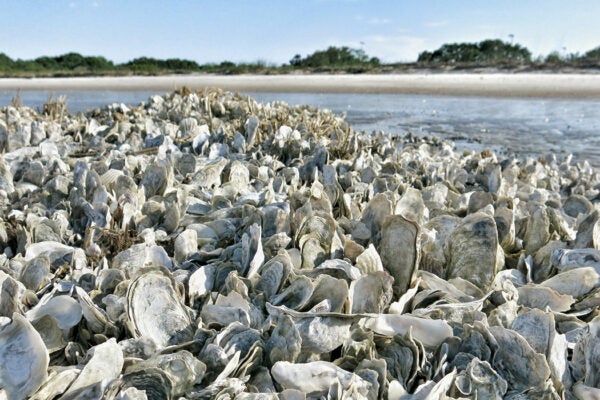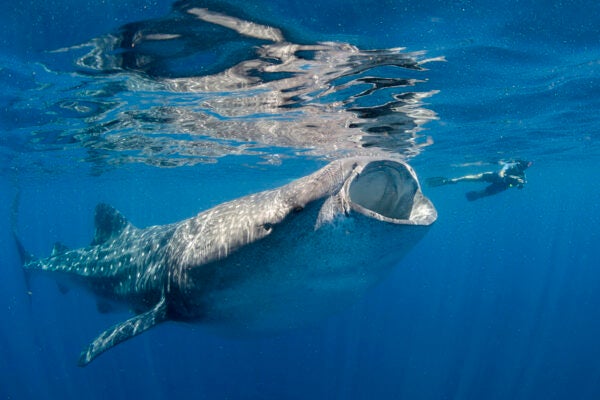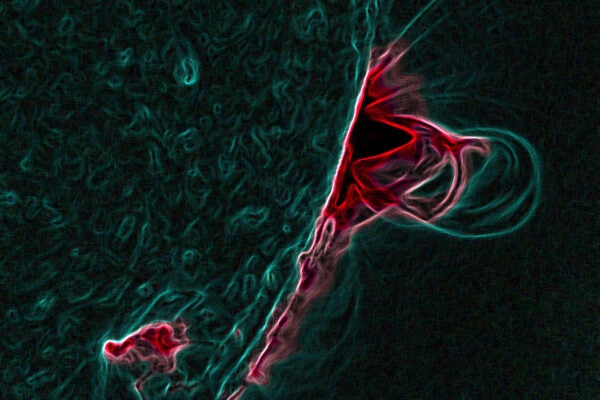Group living is central to the lives of baboons and most other primates because group size and social structure influence survival and reproductive success. But scientists are only beginning to understand what determines the optimal group size for social species like baboons. Large groups provide protection against predators and can out-compete smaller groups for food, but competition for food within the group increases as the group gets larger. Larger groups quickly exhaust a food patch, requiring them to travel farther in constant search of new food. A new study on the Amboseli baboons of East Africa shows that there is a “sweet spot,” or optimal group size, that is largely a factor of competition for resources and the need for protection from predators.
For decades, evolutionary biologists have made theoretical predictions about what factors determine optimal group size. “In the past, we thought that competition within the group increases linearly as you increase group size, whereas the benefits of group living increase at first and then plateau out as the group gets too big,” explains Colin Chapman, a primate ecologist at McGill University who studies group size and social organization in red colobus monkeys in Uganda (he was not involved in this study). So the optimal group size should occur where costs start to outweigh the benefits, he said.
In the new study, the researchers expected to find a linear relationship as described by Chapman, but unexpectedly, they found a quadratic, or U-shaped, relationship between group size and the well-being of group members. “The disadvantages of small groups may not have come to light before, partly because very small groups tend to disappear,” explains Jeanne Altmann of Princeton University, who initiated the long-term Amboseli baboon project with her husband, Stuart Altmann, in the 1960s. Most studies investigating this question until now have been biased toward larger groups, which are easier to track. That’s why we’ve rarely been able to find an empirical result to support the theoretical predictions, said A. Catherine Markham of Stony Brook University, the lead author of the new study.
***
To investigate how group size affects baboons’ fitness—their ability to survive and reproduce—the team led by Markham analyzed data collected over 11 years on several large and small groups of wild baboons living near Amboseli National Park in Kenya. “That is an amazing dataset,” emphasizes Chapman.
First, the researchers examined the geographical range covered by different groups of baboons as they foraged for food. They hypothesized that large groups would quickly exhaust any food the groups came across, so the groups would have to travel far to continually find new food patches. Small groups might not exhaust food resources quickly, but larger competing groups could push them away from food patches, and small groups would also have to be on the move to escape predators. In contrast, a medium-sized group would not exhaust food resources too rapidly, but would provide enough protection from predators and other groups.
Although traditional methods required a field observer to follow one group of baboons for entire days at a time, the research team wanted to collect data on many groups at once. To do this, they decided to use a method common among ornithologists (but new to primatologists): remote GPS tracking. By putting a GPS collar on one baboon in each group, researchers were able to collect detailed information about the location of all of the groups simultaneously for days. The data showed that the medium-sized groups traveled the least and were able to meet their food needs over a small geographic range, whereas the very small and very large groups had to travel farther to find food and escape predators.
The research team also measured physiological stress levels in the baboons by collecting feces samples (a noninvasive method) and analyzed the amount of glucocorticoid hormone in the stool. High levels of glucocorticoids are associated with high stress, decreased reproductive function, and compromised immune function.
Stress can come from a variety of sources, including climate and weather patterns. The dry season in the East African savanna makes food scarce from June to November, which can be stressful for the baboons. And dominance rank can also affect stress levels: A previous study showed that low-ranking males experience high levels of stress, as would be expected. But perhaps counterintuitively, the highest-ranking (alpha) males had comparable levels of stress to the lowest-ranking male, because alpha males spent a lot of time guarding females and making sure that no one else was mating with them. They also had to be aggressive and constantly vigilant—prepared to fight off the males who tried to challenge them, explained Laurence Gesquière, who led the hormone work.
Gesquière hypothesized that the relationship between group size and travelling distance and stress hormone was going to be a linear one, with animals in large size group travelling longer distance and being more stressed; the results showed that this relationship was quadratic and that individuals from very large or very small groups tended to travel more and have higher levels of glucocorticoids than individuals from the medium-sized groups.
The geographical ranges and glucocorticoid data produced similar patterns, showing that though baboon groups range in size from about 20 to 100 individuals, intermediate-sized groups—groups comprising about 50 to 70 baboons—exhibited optimal ranging behavior and lower physiological stress levels.
***
The findings may have important implications for conservation. “There are some species that can’t live in small groups—if the group is too small, there aren’t enough animals to spot the predators, and the group disappears,” explains Chapman. “But if you log an area, or if climate change reduces the available food resources, then those animals might be forced into small groups that would not be viable.”
In addition, the findings are important for understanding the group behavior of all kinds of social species because they explain why some animals live with others and how many neighbors will be best, says Markham. What’s the perfect group size? The specifics will vary with different species and different populations, Altmann says. “That will depend on things like the predators and the continuity of the habitat and even length of a period of drought. But the general patterns will be the same even if the specifics vary,” she continued. “We should be able to get to the point where we can predict the specifics for a variety of species and situations.”
The findings might also shed light on the social life of prehistoric human groups living in savanna ecosystems, says Markham. “Understanding how a species living in a similar environment takes advantage of resources can help us generate hypotheses for what the social world of our hominin ancestors may have been like.”







